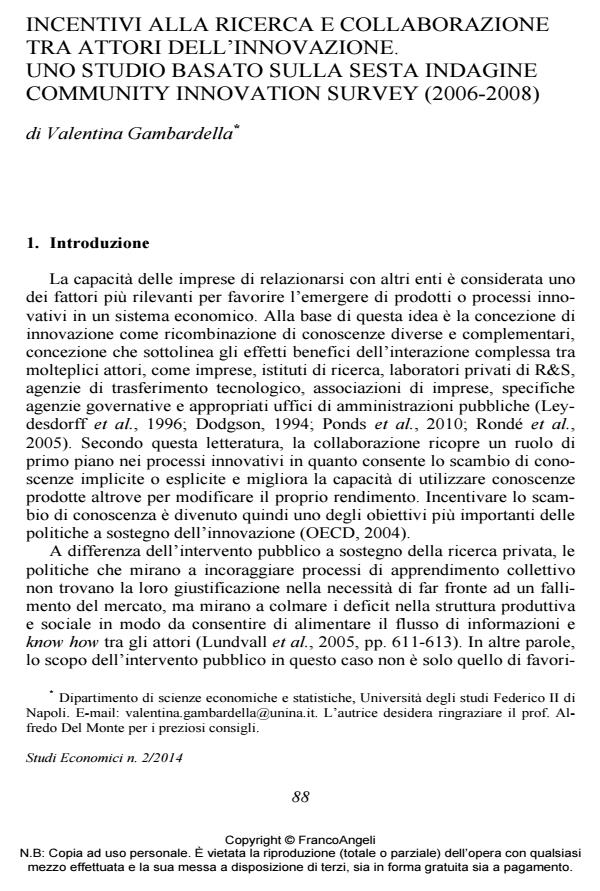Incentivi alla ricerca e collaborazione tra attori dell’innovazione. Uno studio basato sulla sesta indagine Community Innovation Survey (2006-2008)
Titolo Rivista STUDI ECONOMICI
Autori/Curatori Valentina Gambardella
Anno di pubblicazione 2015 Fascicolo 2014/113
Lingua Italiano Numero pagine 28 P. 88-115 Dimensione file 130 KB
DOI 10.3280/STE2014-113004
Il DOI è il codice a barre della proprietà intellettuale: per saperne di più
clicca qui
Qui sotto puoi vedere in anteprima la prima pagina di questo articolo.
Se questo articolo ti interessa, lo puoi acquistare (e scaricare in formato pdf) seguendo le facili indicazioni per acquistare il download credit. Acquista Download Credits per scaricare questo Articolo in formato PDF

FrancoAngeli è membro della Publishers International Linking Association, Inc (PILA)associazione indipendente e non profit per facilitare (attraverso i servizi tecnologici implementati da CrossRef.org) l’accesso degli studiosi ai contenuti digitali nelle pubblicazioni professionali e scientifiche
Economic leterature has stressed the importance of collaboration among accademia, industry and government as a key driver of innovation. This paper analyses the effects of public funding in promoting cooperation in innovation activities in Italy and in Germany, using data from the sixth Community Innovation Survey. The results show that in both countries receiving public support is positively related to undertaking collaborative innovation, but in Germany this relationship is the strongest. In Italy it varies depending on the funding source, whereas regional incentives on promoting collaboration are weak. This result is largely related to the size of the firm benefiting from this type of pubblic support (small and medium-sized firms) and from the industrial sector theyb belong to (low-technological industries). Additionally, the data show that public financial support also influences the choice of partners, making it easier for firms to adopt a more complex rqange of linkages, including suppliers, clients, and reaserch institutions.
Parole chiave:Innovation policy, Cooperation, Public funding: Behavioural additionality, Community Innovation Survey
Jel codes:O31; O32
Valentina Gambardella, Incentivi alla ricerca e collaborazione tra attori dell’innovazione. Uno studio basato sulla sesta indagine Community Innovation Survey (2006-2008) in "STUDI ECONOMICI " 113/2014, pp 88-115, DOI: 10.3280/STE2014-113004